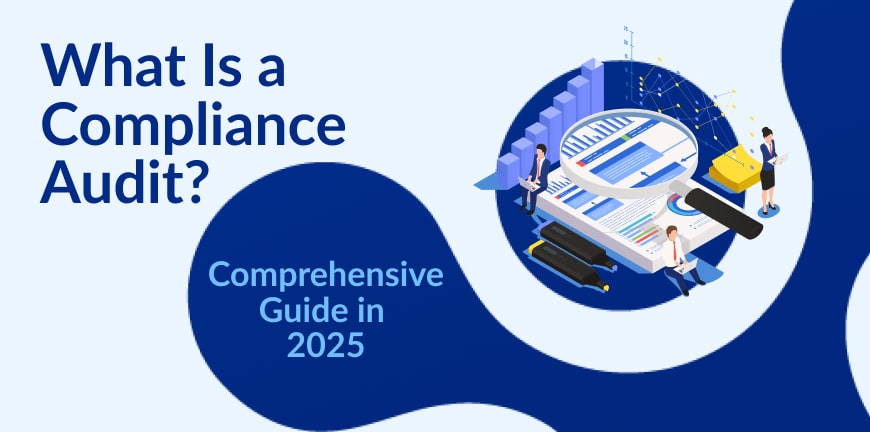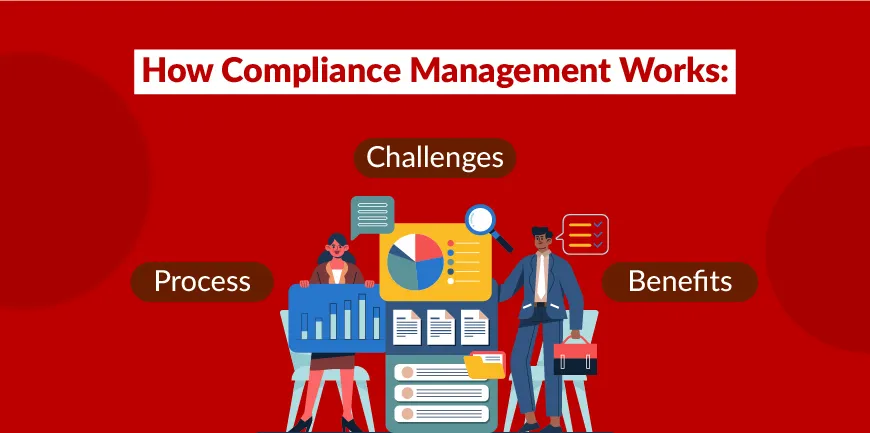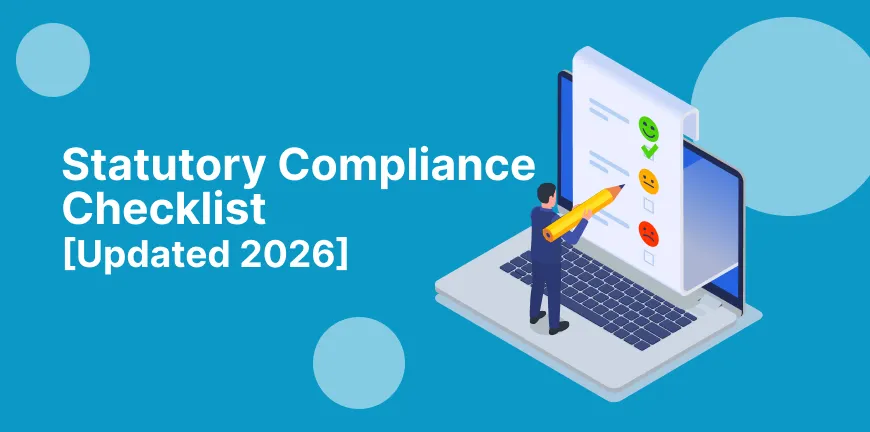
Contract Staffing: Pre-COVID vs. Post-COVID
01/04/2025
What are VMS and MSP Staffing? Key Differences, Benefits
02/04/2025- What Is a Compliance Audit Meaning?
- What is the Importance of Compliance Auditing?
- The Difference Between an Internal Audit and Compliance Audit
- What are the Fundamental Steps of the Compliance Audit Process?
- What are the Tips for a Successful Compliance Audit Process?
- What is Compliance Audit Guidelines and Checklist?
- What are the Examples of Compliance Audits?
- What is a Compliance Audit Report?
- Are You Looking for Trusted Audit Services?
- Frequently Asked Questions (FAQs)
“Managing compliance takes resources, but it’s nowhere near as expensive as the costs associated with a breach.” – Paul Koziarz, President and GM of Regulatory Compliance at CSI
In today’s evolving business landscape, regulations have become an integral part of every stage of business operations. As per the Business Wire survey, among 62% of respondents being audited by a major software vendor in 2024, nearly 32% of them are incurring financial liabilities of over $1 million from compliance audits.
Compliance audits have become part of every business journey and achieving 100 percent compliance has become a herculean task since the regulations and laws keep getting amended on a regular basis.
To gain a competitive edge as a business entity, understanding compliance audit meaning and all other related aspects is paramount. Let’s delve deep and understand compliance auditing in depth through this comprehensive guide in 2025.
What Is a Compliance Audit Meaning?
A compliance audit meaning in simple terms can be stated as a comprehensive assessment done by a team of experts either internal or external to ensure the business is performing to a prescribed standard set by the governing authorities.
If there are gaps found in the final compliance audit report, then the company must take proactive measures to rectify them to prevent legal issues and penalties.
A successful compliance audit will ensure the company’s brand reputation is enhanced and all the stakeholders continue to be associated with them long term. Typically, there will be an internal audit before an external audit to ensure any gaps can be fixed right away and the final audit outcome is favourable.
What is the Importance of Compliance Auditing?
A compliance audit report is critical to assert a business firm’s adherence to regulations and can act as proof when it comes to getting certifications for companies like ISO and other top certifying organizations. Compliance audits can act as an eye opener for business organizations to look at the gaps in their existing operations and procedures and fix them on a priority basis. It will not only help them avoid penalties and legal troubles but also improve operational efficiency and create a positive impact on all their stakeholders.
Here are 4 reasons why compliance audit is vital for your company’s future growth and brand promotion.
1. Offers Objective Insights
Typically, the internal or external compliance audit team will not be involved directly in the operations and hence can offer an unbiased view of the current status of compliance and pitfalls. This can act as a catalyst in helping businesses take proactive measures and fix all the gaps to ensure better productivity and increase brand value.
2. Enhanced Operational Efficiency
The external or internal audit compliance team will review policies, procedures and will also physically evaluate the company premises, and will offer their insights and recommendations. By implementing those recommendations, you can observe an increase in operational efficiency leading to better productivity and work culture.
3. Risk Evaluations and Assets Protection
A compliance audit team assists management and stakeholders in identifying potential risks through a systematic risk assessment. Using these insights, the operations team can initiate risk mitigation measures right away. This will not only increase the chances of achieving 100% compliance but also help in asset protection by eliminating penalties and legal issues.
4. Align Compliance with laws and regulations.
Compliance audit procedures will push the management to come up with proactive measures that will ensure compliance with laws and regulations. This will prepare the companies to manage future audits with more diligence and eliminate risks efficiently.
The Difference Between an Internal Audit and Compliance Audit
The difference between audit and compliance is subtle but both have their importance in mitigating risks and help organizations avoid penalties and legal complications. The differences include:
| Feature | Internal Audit | Compliance Audit |
| Auditors | Internal employees team or a consultant | Independent Experts and Third Party |
| Focus | Assessing and improving internal processes and risk mitigation | Ensure company adheres to external regulations and procedures set by government bodies |
| Purpose | Management and stake holders will get a proper assessment on current status of compliance and potential risks | The evaluation is directed to ensure the organization is adhering to regulations and avoid legal complications |
| Scope | It’s a broader evaluation on all aspects related to the organizations | It is very specific to industry standards and regulations set by government agencies |
| Reporting | Usually internal and reported to management and stake holders | Both internal and external based on regulatory stipulations |
What are the Fundamental Steps of the Compliance Audit Process?
There are 5 fundamental steps involved in generating a final compliance audit report. Each step may be executed by the same team or assigned to a different team based on available resources. Here are the 5 steps usually followed by most compliance audit teams:
1. Appoint an Auditor
Compliance auditing needs experience and expertise to ensure the best outcomes for all the parties involved. Instead of choosing the audit team internally, it’s always better to outsource to avoid delays and inaccurate results. Collaborating with an expert compliance audit team that has proven expertise in managing end-to-end compliance can be a game-changer.
2. Set up the Scope of the Audit
The audit typically begins with an official meeting between the auditor and the business organization’s senior management to finalize the compliance audit guidelines, checklists, and scope. Ensure the purpose of the audit is well defined and all the related questions raised are discussed and answered effectively.
3. Conduct an in-depth risk assessment.
Since risk appetite varies from company to company, the compliance audit requirements and methods have shifted from reactive process-based to proactive risk-based approaches. The auditor will conduct an in-depth risk assessment and will provide the findings in the form of a detailed report that the company can use as a guide to mitigate all potential risks and achieve best results.
4. Review Process Processes and Controls
In this critical step, the auditor will review processes, policies, and all related documents. Next, the stakeholders, management, and employees are interviewed to understand the gaps in the compliance practices.
5. Create a final audit report and suggest corrective action.
It is imperative that the compliance auditor communicates the progress of the audit at every stage to the management and internal stakeholders. Once the final compliance audit report is prepared, the auditor must discuss the findings and suggest recommendations and solutions for fixing non-compliance aspects given in the report.
The auditor’s responsibility doesn’t end here as a follow-up must be conducted to ensure the company has implemented the changes, mitigated all the potential risks and achieved 100% compliance.
What are the Tips for a Successful Compliance Audit Process?
Conducting a successful compliance audit is vital to ensuring that the organization is following all the required regulations and standards and avoids penalties and legal complications. Here are 6 tips that can help you conduct a successful compliance audit.
1. Have a clear understanding of the scope and the objectives
Before commencing the compliance audit, it is always advised to define the scope and the objectives clearly. Research and finalize the laws, regulations, and internal policies that apply to the organization.
Then, identify the areas that require immediate attention. Also, involve the upper management, stakeholders, legal team, and other important members to gain valuable insights before going ahead with a detailed audit.
2. Build a Detailed Audit Plan
Create a detailed audit plan that includes the outlines of the audit process, timelines, personnel involved in the audit, point of contact at each step, and responsibilities. It’s a team teamwork and each person should carry out their task diligently to have a successful audit.
Also, a well-structured compliance audit checklist is a must for carrying out the audit smoothly.
3. Conduct a thorough review of Applicable Laws and Regulations.
This is a crucial step, and the audit team must do a thorough review of the applicable laws and regulations and be aware of any changes and amendments so that there are hiccups in the future.
Ensure the internal policies and documentation are cross-referenced with the regulations and laws and if gaps are found, they must be included in the findings without fail.
4. Conduct interviews and create awareness.
To get an idea of current compliance practices, conducting interviews with employees, department heads and other higher officials in the organization is essential. Through this, we can identify areas of concern and create awareness among the employees of best practices, compliance laws, and misconceptions.
5. Review Internal Processes and Controls
Make a thorough assessment of how the internal processes and controls are adhering to the relevant compliance regulations. Identify weak areas and offer recommendations to fix them on a priority basis so that they don’t become a hurdle during compliance process.
6. Initiate Testing of Compliance Activities
Select a bunch of processes, transactions, and activities to test compliance against specific requirements. This may include checking financial records, employee contracts, production floor hygiene, environment compliance, etc.
Use standard testing methods to ensure objectivity and consistency. Document all the findings and devise an action plan to mitigate instances of non-compliance.
7. Create a Final Compliance Audit Report and Offer Recommendations
Prepare an in-depth compliance audit report and communicate the findings and recommendations to all the responsible parties. The report must include areas of non-compliance, potential risks, root causes, and other key details that need to be addressed on priority.
Provide practical recommendations that include possible corrective measures, a timeline, and responsible parties to carry out the corrective actions.
8. Implement Corrective Measures and Perform Follow-up
The responsibility of the auditor doesn’t end with providing a final compliance audit report. Ensuring the corrective plan is implemented and doing follow-up is also important to ensure the organization is heading on the right path of achieving 100% compliance.
What is Compliance Audit Guidelines and Checklist?
Compliance Audit Guidelines
Compliance Audit Guidelines are a framework that assists an auditor in making a detailed assessment of an organization’s adherence to regulations, laws, internal processes, and policies. The final audit report is generated based on the compliance audit guidelines and weighing the company’s compliance against recommended standards. The key elements included in compliance audit guidelines include:
- Establish the scope of the audit.
- Review and Analysis
- Find non-compliance areas
- Reporting and communication
- Corrective actions
- Implementation of corrective measures and follow-up
Compliance Audit Checklist
A compliance audit checklist is a structured Audit tool used for systematic assessment of an organization’s compliance against stipulated regulations, laws, internal policies and industry standards.
Compliance audit agencies such as Alp Consulting will use this checklist diligently to review the various aspects of business organizations such as policies, documents, procedures, etc, and document all the findings and areas of improvement. The key elements covered include:
- Policies and Procedures
- Training
- Record Keeping
- Controls
- Risk assessment
- Documentation
What are the Examples of Compliance Audits?
The method of compliance audit varies based on the organization, the regulations it must adhere to, size, location, and type. Here are some compliance audit examples for better understanding.
1. Data Protection and Information Security
This type of organization must be compliant with SOC 2 (Service Organization Control 2). Suppose your business offers cloud-based services or manages client data, A SOC2 audit will be conducted to ensure you are handling data adequately. The key areas focused on this audit are called Trust Service Criteria (TSCs). It includes:
- Security
- Availability
- Processing Integrity
- Confidentiality
- Privacy
2. Healthcare and Privacy
This type of organization must be compliant with HIPAA (Health Insurance Portability and Accountability Act). Here managing patient health information (PHI), third-party vendors such as billing services must be compliant with HIPAA and its non-negotiable. This compliance act ensures patient’s medical records, billings, treatment and other details are kept private and secure. The audit areas covered include privacy and security rules.
What is a Compliance Audit Report?
A compliance audit report is a detailed and structured document prepared by the auditor that provides insights, recommendations, potential risks, and gaps in an organization’s adherence to external and internal regulations, laws, and industry standards. The audit report covers a wide range of areas such as:
- Internal policies and procedures
- User access controls
- Regulations
- Security policies
- Compliance preparations
The compliance audit report typically consists of findings, areas of non-compliance, recommendations, and corrective actions. The audit report is crucial to establishing a company’s brand reputation and increasing trust among stakeholders and end customers. By incorporating the recommendations of the compliance audit reports, a business firm can achieve
- Ethical and legal compliance
- Mitigate Potential Risks
- Improve Productivity
- Better Company Culture
- Improved Internal Controls
- Demonstrate Accountability
Are You Looking for Trusted Audit Services?
Compliance Audit is a critical and mandatory process for all business organizations looking to improve their brand value and continued growth. To get an accurate and actional compliance audit report, it is always advised to collaborate with a top compliant audit agency that has proven expertise and experience in the field of conducting successful compliance audits for all types of business organizations.
Alp Consulting is one such expert who is a one-stop destination for all your compliance audit needs.
The Alp Consulting advantage includes:
- Prevention of Penalties and Legal Consequences.
- Detailed Audit of Labour Law Compliance.
- Regular Contractor Compliance Monitoring.
- Statutory Payments.
Frequently Asked Questions (FAQs)
1. What is environmental compliance audit?
An environmental compliance audit is a detailed and systematic assessment of a business firm’s operations and other activities that will give a clear understanding of its compliance with relevant regulations and laws associated with the environment such as The Environment Protection Act, of 1986 (EPA, 1986). If auditors find any compliance audit issues related to this can lead to penalties, legal cases and cancelation of licenses.
2. What is the role of audit compliance?
The role of audit compliance is vital as it provides valuable insights into how a business organization is complying with the regulations and protocols set by government authorities. During a compliance audit, potential risk areas will be identified, and possible countermeasures will be discussed to ensure the gaps are filled and the organization can achieve 100% compliance after implementing the changes.
3. What is compliance audit by CAG?
Compliance Audits by CAG (Comptroller and Auditor General) will include an in-depth assessment of the activities performed by auditable entities such as financial transactions are in accordance with the constitution, law, budgetary resolutions, established codes, etc.
4. Who performs a compliance audit?
Usually, the compliance audit is carried out by an internal audit team chosen by the management and the stakeholders or a third party such as compliance audit agencies to ensure the operations and internal policies are aligning with the laws and regulations set by government bodies.
5. What is the difference between compliance audit and performance audit?
Compliance audit gives insights into how the company’s operations and policies are aligned with the laws and regulations set by government agencies. On the other hand, a performance audit focuses on how a particular program is performing against the goals set by the organization in terms of output, effectiveness, efficiency, economy, etc.
6. What is a compliance audit checklist?
A compliance audit checklist is a standard tool used by auditors to document their findings and recommendations while assessing an organization’s operations and internal policies against the benchmark set by government agencies in terms of regulations and laws.
7. What are the compliance audit issues?
Some of the common compliance audit issues observed by auditors include non-compliance with norms and regulations, insufficient or lack of documentation, unethical practices, etc.
8. What are the Compliance audit requirements
Compliance audit requirements include identifying regulations and laws compatible with the organization’s products and services, assessing risks, and ensuring 100 percent compliance with regulatory and legal benchmarks.
Contact Us For Business Enquiry

Hariharan Iyer
Hariharan Iyer is the Vice President – Operations at ALP Consulting, bringing over 40+ years of experience in HR outsourcing and labour law compliance. He leads end-to-end HRO operations, ensuring process efficiency, statutory compliance, and seamless service delivery for clients across industries. With a strong background in labour law governance and workforce management, Hariharan plays a key role in driving operational excellence and compliance-led HR solutions at ALP Consulting.




